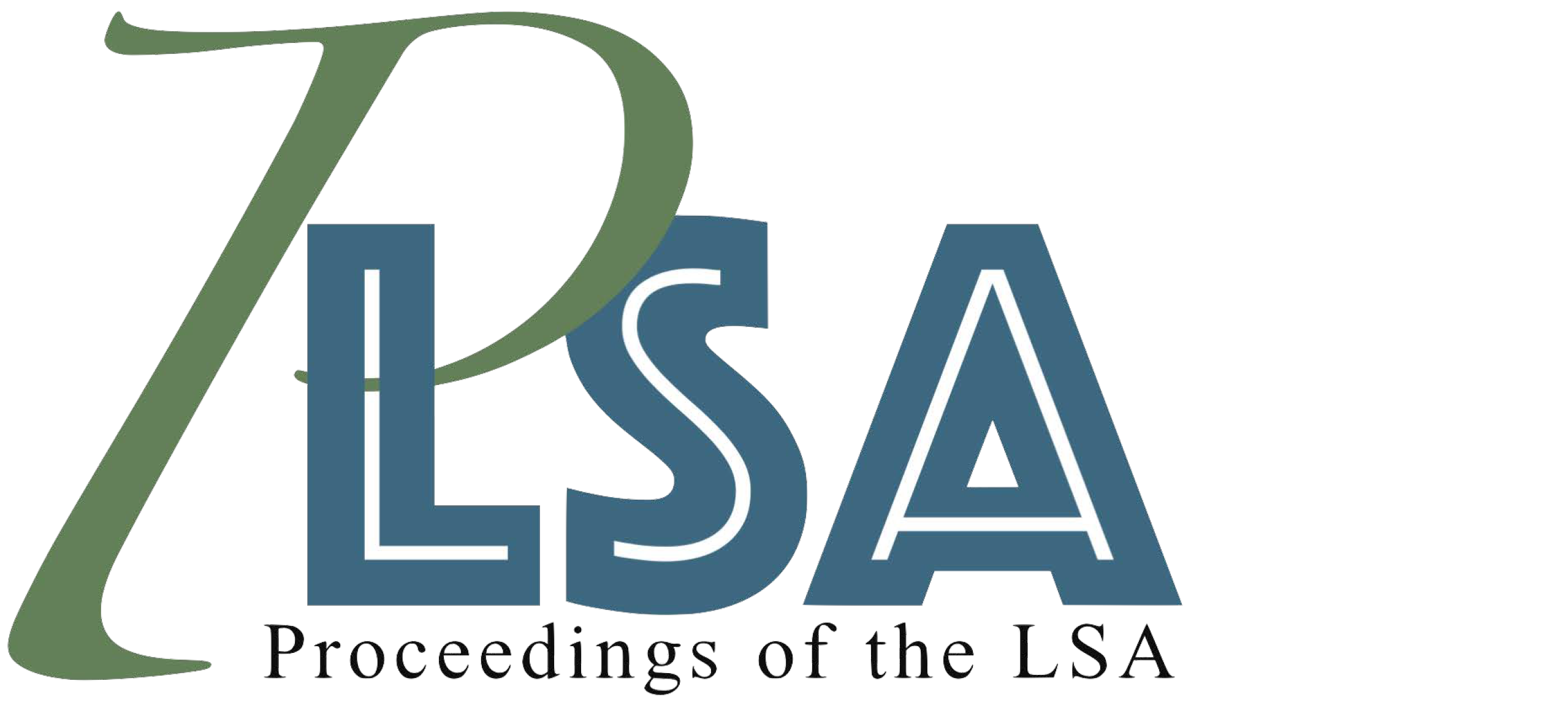The does not encode an anaphoric index: Evidence from kind uses
DOI:
https://doi.org/10.3765/plsa.v9i1.5764Keywords:
domain restriction, definite descriptions, uniqueness, anaphoricity, kind referenceAbstract
Two types of semantic theories concerning referring uses of the English definite article the have historically held sway: (i) uniqueness theories, where the is taken to uniquely describe a referent within some contextually restricted domain, and (ii) familiarity theories, where the picks out a previously mentioned referent. Here, we focus on an observation made in Reed (2024) on the anaphoric potential of the definite article in kind-denoting contexts: namely, that it is limited when compared to occurrences of the in anaphoric individual-denoting contexts as well as to occurrences of other referring expressions (e.g., that) in anaphoric kind-denoting contexts. Based on these data, we argue for an analysis of the definite article that makes crucial use of domain restriction rather than anaphoric indices.
Downloads
Published
Issue
Section
License
Copyright (c) 2024 Sadhwi Srinivas

This work is licensed under a Creative Commons Attribution 4.0 International License.
Published by the LSA with permission of the author(s) under a CC BY 4.0 license.
